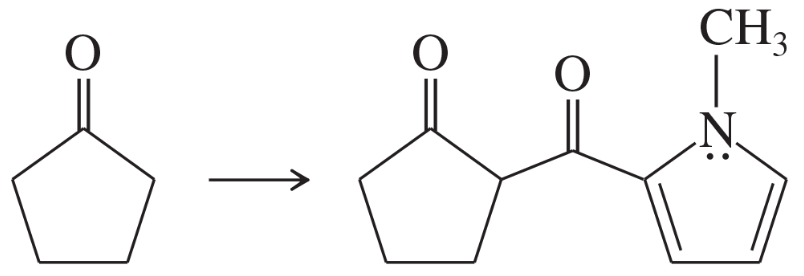Here are the essential concepts you must grasp in order to answer the question correctly.
Hell-Volhard-Zelinski Reaction
The Hell-Volhard-Zelinski (HVZ) reaction is a method for the halogenation of carboxylic acids at the alpha position. It involves the formation of an acyl halide from the carboxylic acid, followed by halogenation using a halogen (like Br2) and a base. This reaction is particularly useful for introducing halogen substituents into organic molecules, which can further participate in various synthetic transformations.
Recommended video:
Reagents and Conditions
Understanding the appropriate reagents and conditions is crucial for successful organic transformations. For the HVZ reaction, common reagents include phosphorus tribromide (PBr3) or thionyl chloride (SOCl2) to convert carboxylic acids to acyl halides, followed by the addition of a halogen. The choice of base, such as triethylamine, can also influence the reaction's efficiency and yield.
Recommended video:
Mechanism of Organic Reactions
A solid grasp of reaction mechanisms is essential for predicting the outcomes of organic reactions. The HVZ reaction proceeds through a series of steps: formation of the acyl halide, nucleophilic attack by the halogen, and subsequent elimination of the leaving group. Understanding these steps helps in rationalizing the reaction conditions and optimizing yields for desired products.
Recommended video:
Identifying organic molecules



 Verified step by step guidance
Verified step by step guidance Verified video answer for a similar problem:
Verified video answer for a similar problem:

